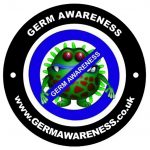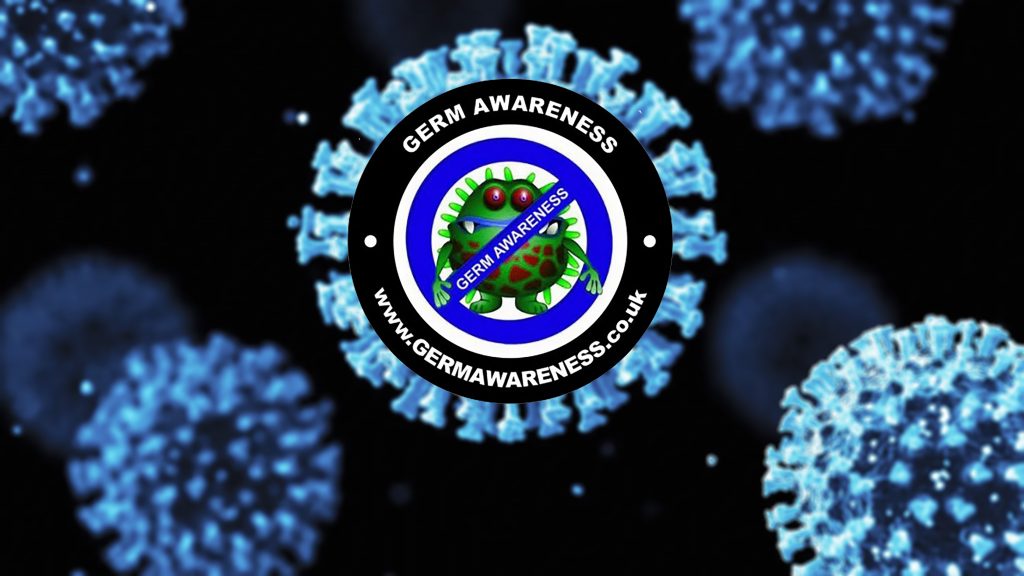
In This Article
- 20 Foods That Pose Risks if Not Thoroughly Cooked
- Food Preparation
- Proper Food Storage
The Importance of Proper Cooking: 20 FoodsTthat Pose Risks if Not Thoroughly Cooked
Cooking is an art, but it’s also a science crucial to ensuring food safety. Certain foods can harbor harmful bacteria, toxins, or parasites that are neutralized only through proper cooking.
Here’s a list of 20 foods that can be dangerous if not cooked properly, along with the reasons why.
1. Poultry (Chicken, Turkey, Duck)
- Danger: Raw poultry can contain Salmonella and Campylobacter bacteria.
- Risk: These bacteria cause severe food poisoning, leading to symptoms like diarrhea, fever, and abdominal cramps.
2. Ground Beef
- Danger: Ground beef can harbor E. coli, particularly O157strain.
- Risk: E. coli infection can cause severe gastrointestinal distress and, in some cases, kidney failure.
3. Pork
- Danger: Pork can contain Trichinella spiralis larvae, leading to trichinosis.
- Risk: Trichinosis causes muscle pain, fever, and swelling. Proper cooking kills the larvae.
4. Eggs
- Danger: Raw or undercooked eggs can contain Salmonella.
- Risk: Ingesting Salmonella can lead to food poisoning with symptoms like nausea, vomiting, and diarrhea.
5. Shellfish (Oysters, Clams, Mussels)
- Danger: Shellfish can be contaminated with Vibrio bacteria.
- Risk: Vibrio infections cause gastrointestinal illness and can be life-threatening for those with weakened immune systems.
6. Fish (Certain Species)
- Danger: Fish like mackerel, tuna, and bluefish can contain scombrotoxin.
- Risk: This toxin can cause scombroid poisoning, leading to allergic reactions, nausea, and vomiting.
7. Rice
- Danger: Cooked rice can harbor Bacillus cereus spores.
- Risk: If rice is improperly stored after cooking, these spores can multiply and produce toxins that cause vomiting and diarrhea.
8. Kidney Beans
- Danger: Raw or undercooked kidney beans contain phytohaemagglutinin.
- Risk: This toxin can cause severe nausea, vomiting, and diarrhea.
9. Potatoes
- Danger: Potatoes exposed to light can develop solanine, a toxic compound.
- Risk: Consuming solanine can lead to nausea, headaches, and neurological problems.
10. Cassava (Yuca)
- Danger: Cassava contains cyanogenic glycosides.
- Risk: If not properly prepared, these compounds can release cyanide, leading to poisoning.
11. Wild Mushrooms
- Danger: Some wild mushrooms contain toxic compounds.
- Risk: Consuming toxic mushrooms can cause severe poisoning, with symptoms ranging from gastrointestinal distress to liver failure.
12. Sprouts (Alfalfa, Bean Sprouts)
- Danger: Raw sprouts can harbor Salmonella, E. coli, and Listeria.
- Risk: These bacteria can cause severe foodborne illnesses.
13. Chicken Liver
- Danger: Chicken liver can contain Campylobacter.
- Risk: Undercooked chicken liver can lead to food poisoning with symptoms like diarrhea and abdominal cramps.
14. Fugu (Pufferfish)
- Danger: Fugu contains tetrodotoxin, a potent neurotoxin.
- Risk: If not prepared correctly, consuming fugu can be fatal.
15. Cassava
- Danger: Contains cyanogenic glycosides.
- Risk: Improper preparation can lead to cyanide poisoning.
16. Elderberries
- Danger: Raw elderberries contain cyanogenic glycosides.
- Risk: Can cause nausea, vomiting, and severe diarrhea if consumed raw.
17. Fiddleheads
- Danger: Raw fiddleheads can carry toxins.
- Risk: Eating undercooked fiddleheads can result in gastrointestinal illness.
18. Rhubarb Leaves
- Danger: Rhubarb leaves contain oxalic acid and anthraquinone glycosides.
- Risk: Consuming these leaves can lead to poisoning, causing difficulty breathing, seizures, and potentially kidney failure.
19. Cheese (Unpasteurized Soft Cheese)
- Danger: Can contain Listeria monocytogenes.
- Risk: Listeria infection can cause severe illness, particularly in pregnant women, newborns, and those with weakened immune systems.
20. Canned Foods (Improperly Canned)
- Danger: Can develop Clostridium botulinum.
- Risk: Botulism is a rare but potentially fatal illness causing paralysis and respiratory failure.
The Health Risks of Food Preparation: A Guide to Food Safety, Awareness, and Cooking
Food preparation is a critical aspect of ensuring the meals we consume are safe and nutritious. However, improper handling and cooking of certain foods can lead to severe health risks, including foodborne illnesses and exposure to harmful toxins.
Health Risks in Food Preparation
Improper food preparation can introduce various health risks, from bacterial infections to exposure to toxic substances. Here are some common health risks associated with food preparation:
- Bacterial Contamination: Foods such as poultry, ground beef, and eggs can harbor bacteria like Salmonella, E. coli, and Campylobacter. Inadequate cooking or cross-contamination during preparation can lead to severe food poisoning.
- Parasites: Foods like pork and certain fish can contain parasites such as Trichinella and Anisakis. These parasites can cause infections if the food is not cooked thoroughly.
- Toxins in Foods: Some foods contain natural toxins that can be harmful if not properly prepared. For example, kidney beans contain phytohaemagglutinin, and cassava contains cyanogenic glycosides, which can release cyanide.
The Importance of Food Awareness
Food awareness involves understanding the potential hazards associated with different foods and the best practices for handling, storing, and cooking them. It encompasses several key aspects:
- Knowledge of Food Sources: Being aware of where your food comes from can help in identifying potential contamination risks. For example, raw seafood from polluted waters may carry harmful bacteria or parasites.
- Proper Storage: Ensuring foods are stored at the correct temperatures can prevent the growth of harmful bacteria. For instance, keeping raw meat separate from ready-to-eat foods can reduce the risk of cross-contamination.
- Cooking Temperatures: Knowing the appropriate cooking temperatures for different foods is crucial. Poultry should reach an internal temperature of 165°F (74°C), while ground beef should be cooked to 160°F (71°C) to kill harmful bacteria.
- Safe Food Handling Practices: This includes washing hands, using separate cutting boards for raw meat and vegetables, and avoiding the consumption of raw or undercooked foods known to carry risks.
Neurological Disorders from Foodborne Toxins
Some foodborne toxins can have severe neurological effects. For example:
- Ciguatera Poisoning: This occurs from consuming reef fish contaminated with ciguatoxins, leading to symptoms such as tingling, dizziness, and in severe cases, hallucinations and neurological disturbances.
- Scombrotoxin Poisoning: Also known as scombroid poisoning, this occurs from consuming fish like tuna and mackerel that have not been properly refrigerated. The toxin can cause headaches, blurred vision, and neurological symptoms.
- Botulism: Caused by the toxin produced by Clostridium botulinum, often found in improperly canned foods. Botulism can lead to paralysis and respiratory failure, necessitating immediate medical intervention.
Cyanide Poisoning from Foods
Certain foods contain compounds that can release cyanide, a potent toxin, if not prepared correctly:
- Cassava: Contains cyanogenic glycosides, which can release cyanide when the plant is improperly processed. Chronic exposure can lead to a condition known as konzo, a neurological disorder characterized by sudden onset of leg weakness.
- Bitter Almonds: Contain amygdalin, which can convert to cyanide in the body. Consuming large quantities of bitter almonds can lead to acute cyanide poisoning, with symptoms including headache, dizziness, shortness of breath, and in severe cases, death.
- Elderberries: Raw elderberries and their leaves contain cyanogenic glycosides. Consuming them raw can cause nausea, vomiting, and cyanide poisoning.
The Crucial Role of Proper Food Storage: Ensuring Safety and Freshness
Proper food storage is a cornerstone of food safety, helping to preserve freshness, prevent contamination, and reduce the risk of foodborne illnesses. Storing food correctly involves understanding the best practices for various types of foods, the importance of temperature control, and the methods to prevent spoilage and waste.
General Principles of Food Storage
- Temperature Control: Maintaining appropriate temperatures is vital to prevent the growth of harmful bacteria. Refrigerators should be kept at or below 40°F (4°C), and freezers should be set at 0°F (-18°C) or lower.
- First In, First Out (FIFO): Rotate stock so that older items are used before newer ones. This practice helps in using foods before they spoil.
- Proper Sealing: Use airtight containers or packaging to store foods. This helps maintain freshness, prevents contamination, and minimizes exposure to air, which can cause spoilage.
- Labeling: Clearly label all stored foods with the date of storage. This helps in keeping track of how long items have been stored and ensures timely use.
Storing Different Types of Foods
- Fresh Produce:
- Refrigeration: Most fruits and vegetables should be stored in the refrigerator to maintain freshness. However, some items like bananas, tomatoes, and potatoes fare better at room temperature.
- Ventilation: Store produce in perforated bags to allow airflow and prevent moisture buildup, which can lead to spoilage.
- Separation: Keep ethylene-producing fruits (e.g., apples, bananas) away from ethylene-sensitive vegetables (e.g., leafy greens) to prevent premature ripening and spoilage.
- Meat, Poultry, and Seafood:
- Refrigeration: Store raw meat, poultry, and seafood in the coldest part of the refrigerator, usually the bottom shelf, to prevent juices from contaminating other foods.
- Freezing: For longer storage, freeze meat, poultry, and seafood. Use freezer-safe packaging to prevent freezer burn.
- Thawing: Thaw frozen items in the refrigerator, not at room temperature, to prevent bacterial growth.
- Dairy Products:
- Refrigeration: Store dairy products such as milk, cheese, and yogurt in the refrigerator.
- Proper Sealing: Keep dairy products tightly sealed to prevent them from absorbing odors from other foods.
- Shelf Life: Pay attention to expiration dates and consume dairy products before they spoil.
- Eggs:
- Refrigeration: Store eggs in their original carton in the refrigerator to protect them from absorbing strong odors and to prevent temperature fluctuations.
- Shelf Life: Eggs can typically be stored for 3-5 weeks after purchase.
- Dry Goods:
- Cool, Dry Place: Store dry goods like grains, cereals, pasta, and canned foods in a cool, dry pantry to prevent moisture and pest contamination.
- Airtight Containers: Transfer items like flour, sugar, and rice to airtight containers to maintain freshness and prevent pests.
- Bread and Baked Goods:
- Room Temperature: Store bread at room temperature for short-term use. Use bread boxes to maintain a balance of humidity.
- Freezing: For longer storage, freeze bread and baked goods. Wrap them tightly in plastic wrap or aluminum foil before placing them in freezer bags.
- Leftovers:
- Prompt Refrigeration: Refrigerate leftovers within two hours of cooking to prevent bacterial growth.
- Shallow Containers: Store leftovers in shallow containers to allow quick cooling.
- Consumption: Consume refrigerated leftovers within 3-4 days.
Preventing Food Spoilage and Waste
- Proper Portioning: Buy and cook only what you need to reduce waste.
- Regular Inventory: Regularly check the contents of your refrigerator and pantry to use items before they spoil.
- Use-By Dates: Pay attention to use-by and expiration dates, and prioritize the consumption of items nearing these dates.
- Creative Cooking: Utilize leftovers creatively in new dishes to avoid waste.
Proper food storage is essential for maintaining food safety, extending shelf life, and reducing waste. By following best practices for temperature control, sealing, labeling, and rotating stock, you can ensure that your food remains fresh and safe to consume. Stay vigilant in your food storage habits to protect your health and make the most of the food you purchase.
Conclusion
Ensuring food safety through proper preparation, cooking, and awareness is essential for preventing a range of health risks, from bacterial infections to neurological disorders and cyanide poisoning. By understanding the hazards associated with different foods and adhering to safe food handling practices, we can protect ourselves and our families from the dangers lurking in improperly prepared foods. Stay informed, practice vigilance in the kitchen, and prioritize food safety to enjoy meals that are not only delicious but also safe and healthy.
Further Reading
- Homepage | Food Standards Agency
- 2018-03-06-FoodStorageCharts-English (fda.gov)
- Food Safety Charts | FoodSafety.gov
- Safe Food Storage | Nutrition.gov















